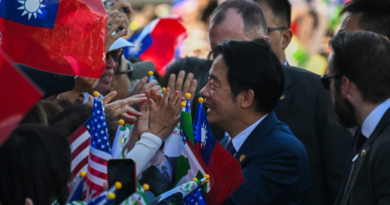USDC issuer Circle expands Asia focus in push to enter the region’s flourishing payments ecosystem
Circle, the issuer of the USDC stablecoin, has been sharpening its focus on Asia as it sees an opportunity for stablecoins to be a part of and bolster the evolving payments ecosystem in the region.
“We’re looking at how to grow a web3 business and support the broader web3 ecosystem, so Asia was a natural place to be,” Yam Ki Chan, Circle’s vice president for strategy and policy, told TechCrunch+ at Korea Blockchain Week last Wednesday.
The company forayed into the region with Singapore, where it received an in-principle approval to operate its payments business last year, and this June, it received a full license to offer digital payment and token services both domestically and internationally. “That’s our Asia hub to start, and then we’re looking more broadly in Asia — we’re considering what it looks like, who the players are, how we can work with them and what their needs are,” Chan said.
Previously known for its more friendly stance toward crypto, Singapore has recently become a bit more cautious about the web3 space after a number of scandals rocked the industry in 2022. But despite its more measured approach, the country is still moving faster than many others both in the region and globally, making it an attractive hub for startups to flock to. In fact, a number of crypto startups I spoke with at the conference noted that while they had Korea-based founders, their companies operated out of Singapore thanks to the country’s more friendly regulatory landscape. It’s similar to how many U.S. founders are based in the States but operate out of the Cayman Islands, which is more friendly to crypto businesses.
In general, Chan thinks the U.S. dollar, or digital dollars, has a great product-market fit in Asia. “As an economist by training, one thing I looked at was, if you look at the trade-to-GDP ratio, Asian economies are much higher than the United States or Europe or intra-Europe trade.”
That makes a lot of sense. It’s easy to buy and sell goods within the EU since its member countries accept a common currency. The U.S. is similar, as you can buy a product in one state and sell it in another. Sure, there might be some discrepancies, like different taxes and local regulations, but it’s pretty easy to transfer funds and not have to worry about exchange rates and the like.
“But it’s different in Asia,” Chan said. “You’re going to have a small, local business started in Seoul and their customer is in Osaka or Kyoto and they’re getting yen in revenue, but their vendors are maybe in Ho Chi Minh or Bangkok and they’re paying [Vietnamese] dong or Thai baht.”
These are all costs that Asian businesses, especially smaller firms, have to carry, which makes it more expensive for them to do cross-border trade compared to their European or U.S. counterparts.
So the big question is, how can Asian businesses send and receive payments in a cheaper way, while also increasing speed and security? Chan thinks the answer may come from blockchain technology and stablecoins, like USDC.
For merchants conducting businesses internationally, and for small ones that might not have the time or resources, using stablecoins could provide a new opportunity, Chan said.


